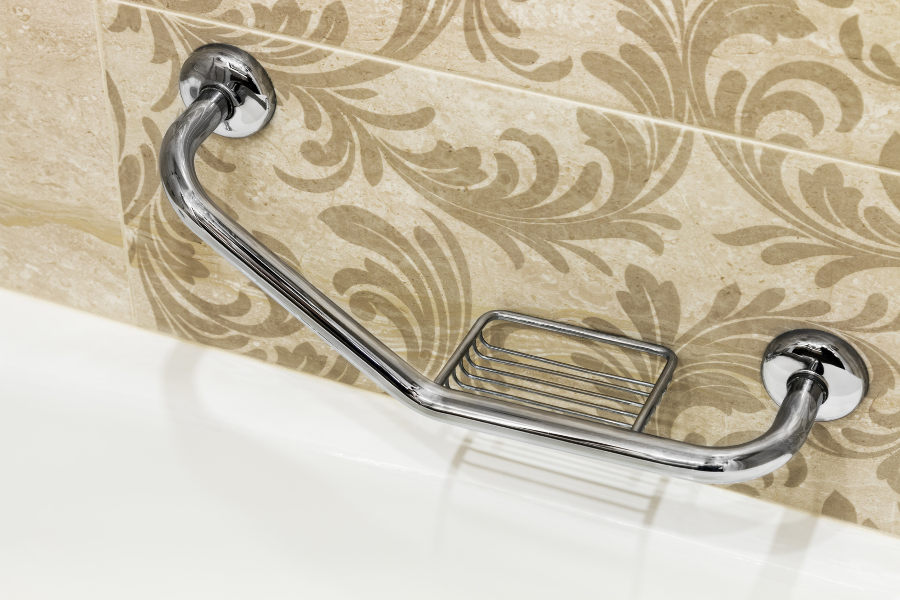Declining mobility poses a number of daily problems, one of which is increased difficulty in using the bathroom. Everyday bathrooms can become difficult and dangerous to use, especially when combined with hazards such as puddles of water on the bathroom floor, and high bath rims.
The good news is that a few simple bathing solutions can help address some early stage problems to create a much easier and safer bathing experience.
Access to the bath or shower
a) Bath steps
Waterproof, anti-slip steps can be positioned anywhere in the bathroom. Made from tough plastic they reduce the threshold required to step over the bath or shower lip. You will need good balance as you will still have to support your weight on one leg whilst stepping into the bath or shower.
b) Bath boards
A solid, hard wearing plastic board that fits across the bath supported on the bath rim. It provides a platform for you to sit on whilst you have a wash, but it will not allow you to enjoy a bath. You will be able to sit on the board and use a shower head attached to your bath taps or even a small bowl or bucket to wash from. A bath board requires a minimum width around the rim of the bath for the board to balance on.
Before purchasing we recommend that you consult the individual manufacturer’s recommendation for the product(s) you are considering and measure your bath. Also, investigate whether your bath will support the weight of the board and the person sitting on it, as some baths have broken when used with a bath board.
c) Shower seats
Free standing shower seats can be placed in the shower to give you something to sit on and take the weight off your feet. You will need to ensure the shower tray is strong enough to support the seat as the user’s weight is concentrated on the feet of the shower stool. Some basic shower trays have been known to break when used with a shower seat.
d) Grab rails
Purpose made grab rails fixed to the wall in key places around the bath or shower enclosure will provide support and hand holds during the critical moments entering and exiting the bath or shower.
Using the bath or shower
Several items may help make bathing or showering a little easier. Long handled sponges and brushes can help you reach your legs, feet and back. Bath mittens, which you wear like a glove, may be easier to use than sponges which can get lost in the bath and be hard to reach when you do find them. Some bath gloves may have a pocket for holding a bar of soap, allowing you to use one hand to wash.
Drying yourself after the bath or shower
A toweling dressing gown or bath robe may be better than using a towel. Simply pull it on and allow the material to dry you, rubbing where you can reach to help the process along. A more advanced solution is a body dryer. This is a device that fits into a corner of the bathroom and operates like a large electric hand dryer, except it is large enough to stand in front of it and slowly turn around drying the body from all sides.
The above solutions will suit someone who is still fairly ambulant. Care should be taken to ensure the items selected are suitable, and your attention is drawn to the fact that some baths and shower trays are insufficient to support the weight of bath boards or shower seats.
These points may lead you to seek a more substantial change in the bathroom, such as installing a shower tray that is purpose made to take the weight of a shower chair or even a wheelchair. Walk-in baths, like the Classic, are a great alternative to standard baths as they are easier to enter and exit. Some full length walk-in baths even have lifting seats to help you get up and down in the bath, such as the Aventis and Cambridge.
If you’d like to discuss altering your bathroom and installing a walk-in bath, easy access shower or wet room, please get in touch with Bathtime Mobility on 03300 882 237.

